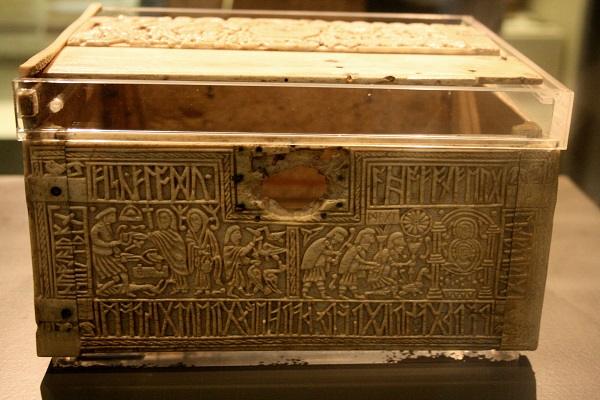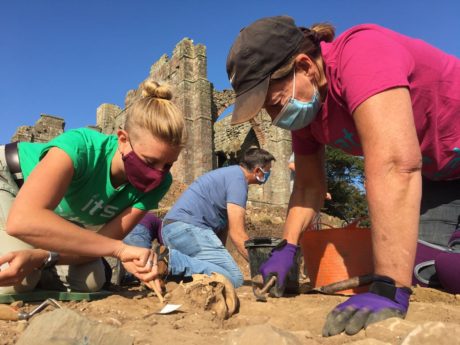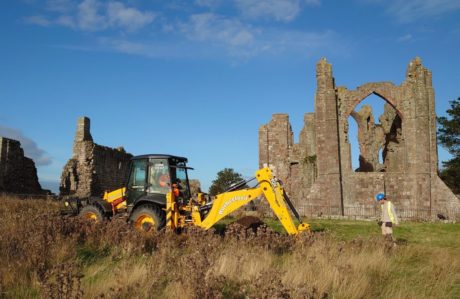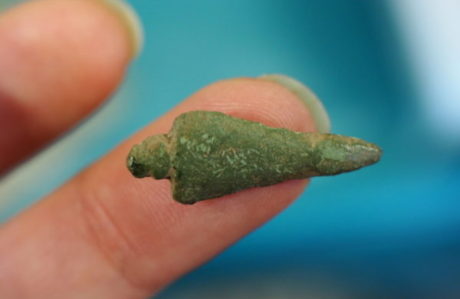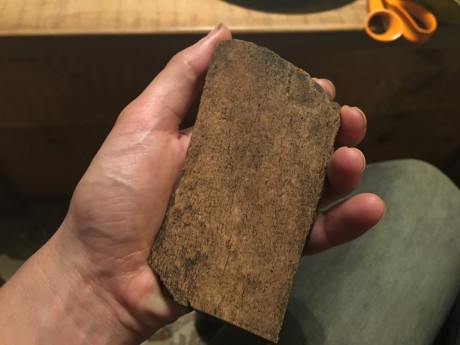
A rare find of whale bone in Trench 3 shows that leviathans beaching on our shores isn’t a modern phenomenon…
Trench 3 is the trench that just keeps giving, with the majority of finds reflecting Lindisfarne’s strong connection with the sea. Fish hooks, boat nails and HUGE quantities of shell make up a significant proportion of the finds retrieved, and emphasise the island inhabitants’ deep-rooted reliance on fishing.
One of the more interesting finds made by Venturer Chris has been identified as a piece of whale bone, retrieved from a Medieval context at the southern end of the trench. We can’t know for sure how it ended up here, though it’s unlikely that the islanders hunted it in the style of Moby Dick!
Far more likey is the possibility that the whale had become stranded on the shore, providing a natural and convenient food source for the island’s Medieval inhabitants.
Other references to beached whales in the archaeological record include an 8th century carved whale bone box from France, known as Frank’s Casket, which includes a telling inscription on it’s front panel about how they came by the bone:
‘The fish beat up the sea on to the mountainous cliff. The king of terror became sad when he swam on to the shingle.’
Finds like this are rare, but its presence in Trench 3 tells us that whales beaching on European shores is not a recent phenomenon, though often attributed to man-made climate change.
The sea acted, as it does today, as a bountiful natural resource for the Medieval Lindisfarners, and the presence of whale bone in our trenches just goes to show how they utilised even the most unusal of its offerings!
